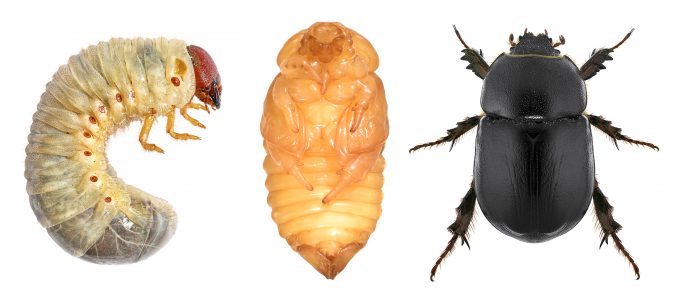The mention of flesh-eating Dermestid beetles can have people screaming for their lives and running for the hills. They automatically assume these beetles will feast on living flesh and quickly devour a person. Fortunately, this is just a big myth propagated by horror movies and other such myths.
To help you better understand our flesh-eating laborer, we answer some of the more commonly asked questions you probably have.
What Are Dermestid Beetles?
This species of beetles are nature’s little helpers in ensure dead and decaying flesh is recycled. The living have nothing to worry about. Dermestid beetles only consume dead and decaying flesh. You could have a colony of these beetles crawl over your body and be tickled, but not bitten or injured in any way.
What Industries Do Flesh-Eating Beetles Benefit?
These hard-working beetles do benefit several different industries. They have been used by museums and anthropologists for decades to remove dead and decaying flesh from dead animals and humans.
As the science of forensics has advanced in recent decades, law enforcement and crime scene investigators can use the little flesh-eaters to help gather evidence or uncover it when it is lodged in the bone.
Flesh-eating beetles for taxidermy are also used by taxidermists when creating European mounts. The beetles offer the safest and most effective method for cleaning the bones and not damaging them. Other bone-cleaning methods can destroy small boney structures, create fractures, or even cause bones to separate.
Do Dermestid Beetles Eat Anything Else Beside Flesh?
This species of beetles will eat any type of organic matter that is dried, dead, or decaying. They like both plant-based and meat-based matter and are not picky eaters. They can enjoy eating paper, books, carpeting, rugs, wool, cotton, furs, full taxidermy mounts, feathers, and more.
Because they are indiscriminate organic matter eaters, it is important to make sure they are contained in a secure environment when used in museums, by taxidermists, or even for at-home DIY skull cleaning.
How Fast Do They Eat Flesh?
You need a pretty big colony that is established to clean a deer or elk skull, with 1000 or more beetles if you want it cleaned in a few days. Smaller colonies can also do the job, but it will take about a week or longer, depending on how many beetles are in the colony. If you want to clean other bones, it will depend on the size of the bones and the amount of flesh to be removed.
How Long Do Dermestid Beetles Live?
The life cycle of a Dermestid begins as an egg. The egg hatches in about four days—and out crawls a larva. The larval stage lasts for about a month and a half, during which time the larva will eat flesh and clean bones.
As the larva grows, it will go through seven or eight molting cycles, gradually getting bigger and bigger until it reaches the pupa stage. This stage lasts about a week, as the pupa gradually transforms into the adult beetle.
At the adult stage, the beetle continues to develop for about a week or two before it is ready to reproduce. The adult will continue to live for about two more months, sometimes longer, and the cycle will repeat.
Do I Need a Business License to Buy Dermestid Beetles for Sale?
You do not need a business license to buy Dermestid beetles for sale. Anyone can buy and own these beetles. However, you do need the right set-up to keep the colony alive and avoid introducing other insects and pests into it, which can destroy it.
To learn more about Dermestid beetles, what is needed to start a colony at home, and how to order beetles, please feel free to explore our website further or contact Kodiak Bones & Bugs Taxidermy at (907) 942-2847 today!


